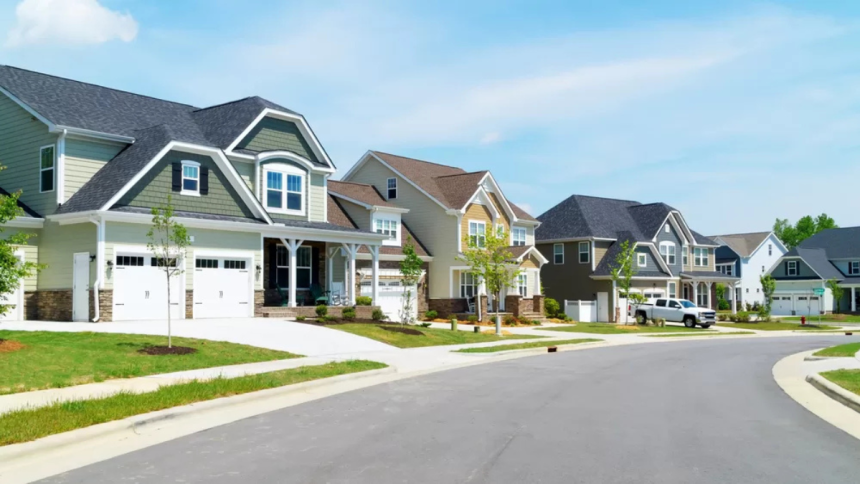In today’s competitive housing market, home builders must go beyond traditional advertising to connect with buyers on a more personal level. Community-level marketing has become essential, allowing builders to engage directly with potential homeowners, understand their needs, and build trust through localized efforts. This approach drives interest and fosters lasting relationships supporting sales and long-term brand loyalty.
One of the most effective ways builders succeed with this strategy is by partnering with organizations specializing in community engagement and localized marketing efforts. New Home Star is a prime example, offering tailored strategies that help builders connect meaningfully with local audiences. Their experience highlights the impact of community-level marketing in driving sustainable growth for home builders. These strategies create more authentic interactions by focusing on each community’s unique characteristics and needs.
Understanding Community Marketing
Community marketing involves a deep understanding of the unique aspects of a neighborhood or region where homebuilders operate. It isn’t just about demographics; it’s about appreciating the intangibles — the vibe, the local happenings, and the nuances of everyday life. This strategy demands listening and adapting to ensure that homes and marketing campaigns speak directly to the local populace’s heart. Builders leverage a community-centric approach to create direct connections with potential buyers. This connection bridges generalized advertising and personalized, meaningful engagement that echoes with authenticity.
Building Trust Within the Community
Confidence is the foundation for any enduring relationship, including the construction of environments. Homebuilders can foster this trust by actively participating in community life through multiple avenues. Whether backing local sporting events or contributing to town hall initiatives, these acts of community support foster goodwill. Other initiatives, like running open-house days at build sites where residents from the community can explore and ask questions, are invaluable. These activities broaden transparency and invite the community to learn about the builder’s commitments, processes, and values. Such open and engaging actions ensure that builders establish a strong reputation as credible and trustworthy partners within the community they aim to serve.
Leveraging Local Events
Local events present a golden opportunity for builders to showcase their projects and interact directly with prospective buyers. These gatherings, be it a street fair, farmers market, or charity marathon, act as touchpoints for engagement. Builders can make their presence felt by sponsoring these events or hosting community barbecues and launch ceremonies. Businesses that align their values with community activities are often rewarded with increased brand visibility and loyalty. When builders are viewed as essential community members instead of outsiders aiming to profit from it, they cultivate a devoted customer base, frequently leading to higher sales and support for their brand.
Strategic Partnerships
Strategic alliances with local businesses amplify a builder’s reach and influence within the community. By collaborating with retail outlets, cafes, or educational institutions, home builders can engage in joint promotions highlighting their commitment to the community’s welfare. Partnerships can be mutually beneficial, often leading to more creative collaboration efforts — such as community gardens or local art showcases — which serve both business interests and communal goodness. These types of engagements create practical benefits and demonstrate a vested interest in the socio-economic health of a community.
The Role of Local Influencers
With the rise of social media, local influencers have gained considerable power in shaping opinions and trends within their communities. By partnering with these influencers, builders can effectively reach a wider audience. Influencers help establish credibility and trust, making them essential in modern marketing strategies for local audiences. By leveraging influencers who share the values and passions of a specific region, home builders can connect with potential buyers in a more personal and relatable way than traditional marketing methods ever could.
Collecting and Acting on Feedback
Continuous adaptation is key to maintaining relevance, and feedback from the community is an indispensable tool in achieving this. Builders can gather invaluable insights through various modes such as surveys, community forums, and informal meet-ups. This feedback loop provides the necessary data to drive decisions that better-fit community needs, from architectural designs to amenities and services offered. Whether tweaks to floor plans or adjustments to marketing campaigns, user input helps ensure that builders remain aligned with evolving community expectations, fostering loyalty and preference among prospective buyers.
Adapting Strategies Based on Community Needs
Recognizing the diversity among different communities is crucial to meaningful engagement. Builders willing to adapt their designs, materials, and offerings to local preferences can uniquely curate customer experiences. Flexibility in marketing and development strategies ensures builders remain responsive to changing demands and customer expectations. This adaptability encompasses aesthetic choices and extends to the kinds of sustainable and innovative building practices that resonate more with environmentally conscious buyers in specific areas. Builders fortify their relevance and appeal over the long term by remaining attuned to the shifting landscape.
Lynn Martelli is an editor at Readability. She received her MFA in Creative Writing from Antioch University and has worked as an editor for over 10 years. Lynn has edited a wide variety of books, including fiction, non-fiction, memoirs, and more. In her free time, Lynn enjoys reading, writing, and spending time with her family and friends.















